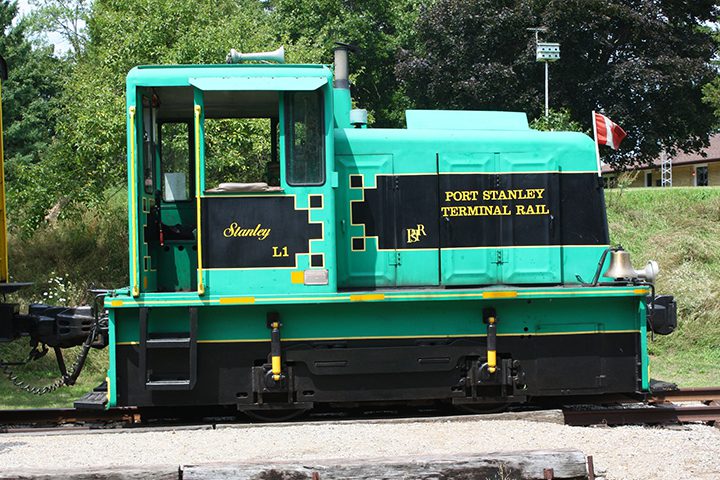Inducted in 2012
The trains of the Port Stanley Terminal Rail travel over the tracks and roadbed of one of Ontario’s oldest railways, the London and Port Stanley Railway, which was completed in 1856. In 1913 the City of London, which owned the line, assumed operations. Adam Beck, the promoter of hydro-electric power from Niagara Falls and mayor of London at the time, rebuilt the line into a high-speed electric operation for freight and passenger traffic. The increased use of the automobile caused the end of passenger service on February 1, 1957. From 1915 onward, over 28 million people had ridden the L&PS. The railway and its remaining freight traffic were traded in 1966 to the Canadian National Railway, for the CNR car repair shops property at York & Rectory streets in London. While the London-St. Thomas section of the line remained a busy freight corridor, the section of the L&PS from St. Thomas to Port Stanley was abandoned in 1982 after a washout at Union. The section had received little maintenance up to that time.
It was then that a group of London and St. Thomas residents formed the Port Stanley Terminal Rail Inc., to purchase the line and rebuild it into an operating railway. The first task of the volunteers was finding the track. No trains had traveled to Port Stanley for over seven years. Trees, weeds and mud buried the right of way and road crossings were paved over. The formidable task of reopening the line began with numerous legal hurdles to be overcome as well. Persistence enabled the first train rides to run in 1983. By 1985 the railway’s volunteers had rebuilt the washout at Union for a fraction of the cost estimated by CNR. It was then possible to open the remaining section of the line.
Insurance challenges, government regulation, disagreement over operating authority, etc., consumed more time and effort than the actual rebuilding of the track. Thousands of ties needed replacement, switch turnouts and passing sidings were needed at Port Stanley, Whytes and St. Thomas. It would take two more years before the PSTR would receive a provincial railway charter, the first under the Ontario Railway Act since 1927. In 1988 the PSTR purchased the entire seven miles of property from St. Thomas to Port Stanley. Two more years of work, meetings and hearings remained before the PSTR would be allowed to operate over the entire line. Several operating restrictions lasted until the passing of the Ontario Shortline Railways Act in December of 1995. Starting in January of 1996 the PSTR could drop the practice of having to stop at each road crossing and flagging the train across. Also changed at this time were the restricted hours of operation. PSTR could now operate after sunset.
The two stations, Port Stanley and Union, were in derelict condition when the line was taken over. Over the years both buildings have been restored. Souvenir sales help maintain these historic buildings.
In its years of operation, PSTR has carried thousands of passengers on the many trains. Over 400 departures take place each season carrying approximately 25,000 riders for the year. PSTR has over 30 pieces of rolling stock on the property and the work of upgrades is continuing.


